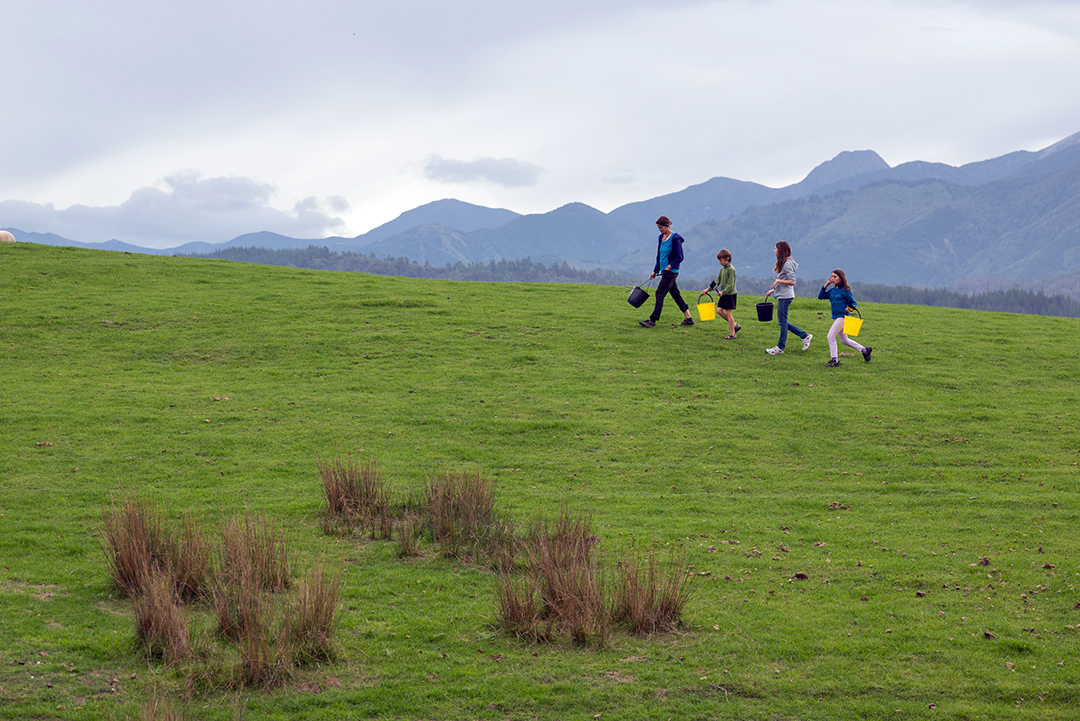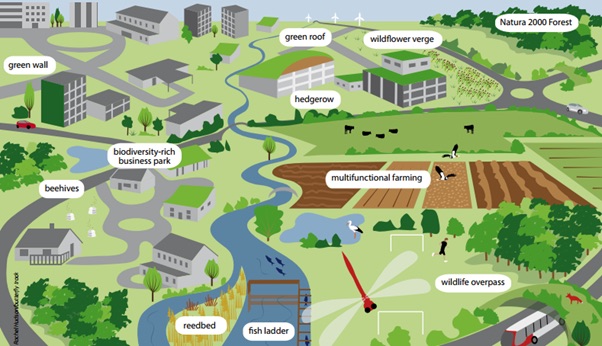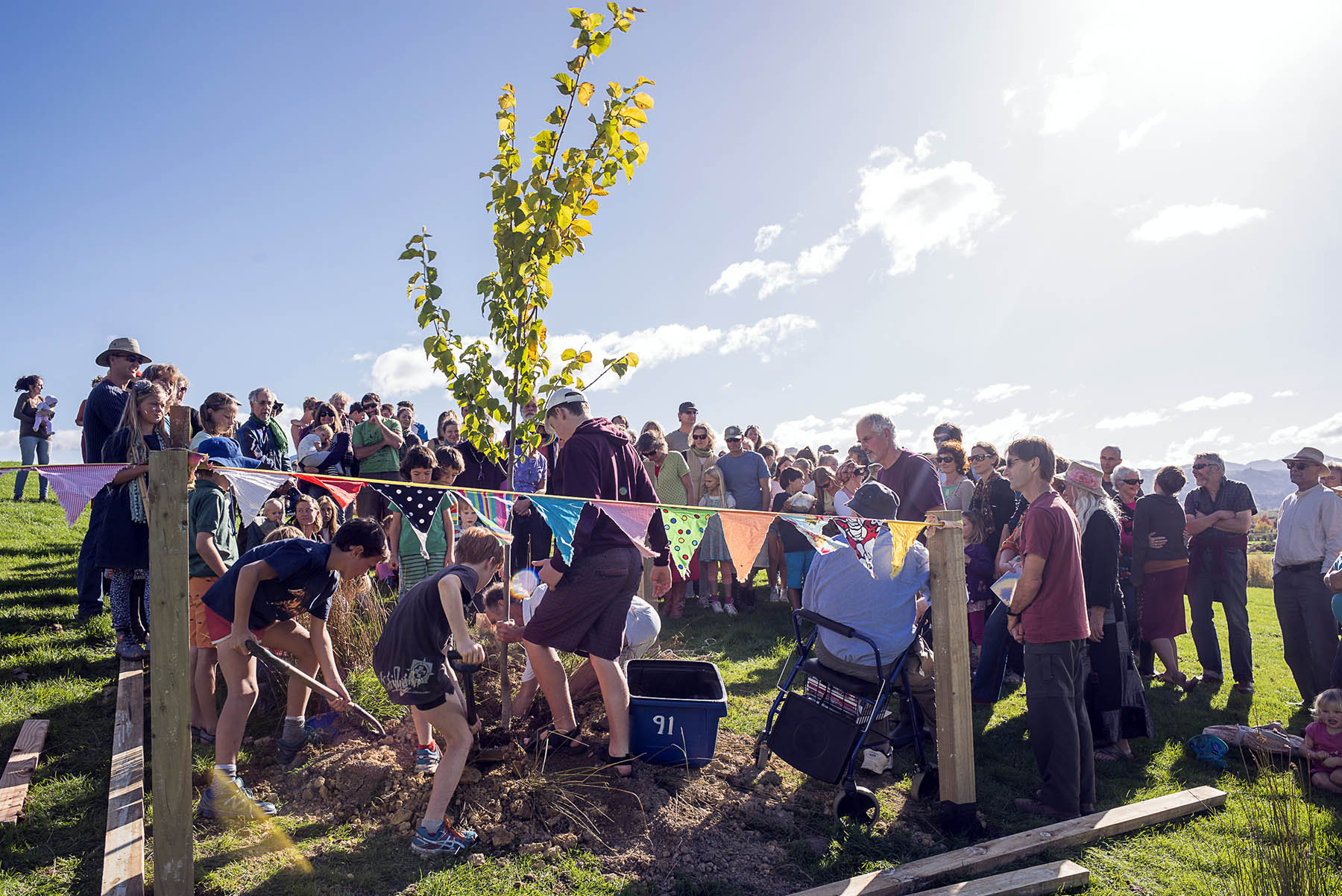As New Zealand fosters more green entrepreneurs and attracts diverse, sustainable-minded people there is a question… Will there be green cities and towns they can live in, with green schools for their children?
The Motueka Rudolf Steiner School is developing an integrated school and biodynamic organic farm on 13.6 hectares close to town. The plan is to shift from being a small town school to become a larger farm based school.
Supported by a strong and caring community, their vision is to attract people who encompass an ecological and sustainable mindset. There is no question that schools are at the heart of a community, and Motueka is setting a precedent for New Zealand schools wanting to foster an environmentally conscious green community.
Connecting children to the land and natural ecosystems is a priority for the Motueka Steiner School, a philosophy that is unique and certainly not mainstream in our educational system. It’s important for children to understand that peas come from plants, not from packets in the freezer. The separation of production and consumption is one of the most important environmental legacies of consumerism that has contributed to the environmental predicament we face today.
Products very often hide the human labour and the environmental effects that have produced them. Due to the geographical shift of factories and industries away from urban areas, resources have lost importance and people don’t understand or care about the process of creating products. Separation has also occurred in the rubbish industry, creating a culture of ‘out of sight, out of mind.’
Commodification leads to a ‘throwaway society,’ with the increase of packaged goods. Lunchboxes are filled with processed foods and plastic packaging.
However, some eco-schools are taking steps to avoid plastic food packaging by removing rubbish bins to help encourage students to consume non-processed, healthy food. This has an additional upside in creating healthier long term eating patterns for children.
Banning one-time use plastic water bottles and providing filtered water fountains and bottle refill stations is another useful strategy.
The disconnect between students and healthy food is worsened by the current food and economic systems. With $1 you can buy 1200 calories of French fries, but only 250 calories of carrots. The Auckland University 2016 study (‘Obesogenic Retail Food Environments Around New Zealand Schools’) mapped nearly every school in the country in 2014, and their proximity to takeaway shops and dairies.
The results showed the devastating reality, that most schools are located less than a kilometre from unhealthy food shops.
“Food is a product of culture, not food alone.” (Wendell Berry)
Historically, eating was about pleasure, family, and spirituality. Yet, food has become an abstract idea — something we don’t think about, until it appears on the grocery shelf or on the table. As scale increases, diversity declines; as diversity declines, so does health; as health declines, the dependence on drugs and chemicals increases.
To solve some of the issues with our food systems we can:
- Encourage school gardens
- Participate in food production
- Prepare your own food
- Eat local produce/support farmers’ markets
- Inquire about food origin and practices
- Insist that food is correctly identified and labelled
Due to the current environmental crisis “we are going to have to resume the breeding of plants and animals to fit the region and the farm”, incorporating local nature, local carrying capacities, and local needs (Wendell Berry).

New environmental practices and innovative schools such as Motueka, show that environmental awareness and action should be an intrinsic part of the culture of a school, as well as having the support of the local community. Students can take seeds home, continuing to grow food and consequently develop wisdom and sensible environmental practices.
“Recently our daughter decided to draw up a plan for the farm she wishes to have when she grows up. She felt inspired to do research into what kind of trees she will plant, and where, which veggies to put in the garden, which animals to include on the farm, and which materials she’ll use to build her house. Suddenly she has developed a real interest in energy efficiency and sustainability. I believe this all stems from seeds that have been planted at school.” (Amy Weber, Parent of Motueka Rudolf Steiner School student)
Pupils also have the opportunity to cook their produce in the school kitchen. Research has linked school gardens to numerous positive outcomes. There is an increase in learning motivation, self esteem, lower rates of bullying, academic achievement, and social interaction. The Pacific Education Institute’s Environmental Education Assessment (2004) showed that schools with environmental education consistently portrayed higher test scores on state standardized tests in math, reading, critical thinking, science, and writing, and increased support from parents, community and administration. Studies also show that environmental education can be used as a strategy to treat depression and prevent school dropout numbers increasing.
Other benefits of eco-schools include:
- Savings in energy bills and water consumption
- Waste reduction and conservation of resources
- Increased environmental awareness and stewardship
- Community involvement
- Career opportunities
Eco-schools and green infrastructure (parks/reserves/bike-lanes) should be considered an essential amenity – an asset to the community that will maintain its value for years to come. Eco-schools and green communities should become a desirable real estate product and those participating would ‘buy’ into the lifestyle. The aesthetics and culinary pleasures, as well as the healthy lifestyle that helps create a catalyst for children and older generations, make it appealing. There will be opportunities and potential for newly created jobs, local markets, food security, and self sufficiency.
Creating eco-schools with organic farms and produce, provides an overall healthier environment where weed killers are replaced with human exercise.
Motueka School project manager and former board of Trustees chairman, Peter Garlick, said “There was no plan, no office, no money, no budget, and no salary. But I love a challenge, and I love the vision. Surprisingly, there are very few farm-based schools in New Zealand.”
Alongside the farm development is the job of designing, fundraising, and building a school. The design brief ensures the farm and the spaces between the buildings are equally as important as the indoor classrooms. New Zealand has an advantage to capitalize on its potential to create garden cities and communities flooded with green infrastructure. Green infrastructure is an interconnected network of natural areas and parks that conserve natural ecosystem values and function. The growing demand to live in a country with a high proportion of natural landscapes places this country at a strong global advantage.

Green Infrastructure plans land use for the future because “wealth cannot purchase a lost opportunity, or restore natural features of grandeur and beauty, which would then possess priceless value.” (Horace Cleveland)
Green infrastructure is important for anthropocentric functions including shade in cities, tourism, national parks and recreation. As communities grow, the economic value of the land grows too.
There are reduced community costs for water retentions, tax, and water purification. Real estate value increases when property is located in close proximity to parks and recreation areas, due to aesthetic reasons such as bike trails and playground spaces for children.
Green infrastructure is essential to provide storm water management, climate adaptation, limitations on heat stress, biodiversity, food production, better air/water quality, sustainable energy production, and healthy soils.
Green architects advocate building clusters of garden cities with eco-schools connected by rail to prevent sprawl, and suggest developing high density housing on less fertile land, and growing crops and preserving parks on rich soils.
“The revolution comes in breaking these long chains in the food system and in the minds of buyers and in building new, tight webs around the centers of communities”. (Will Allen)
Motueka Rudolf Steiner School is setting the foundation for what could be the future blueprint in New Zealand education. Sowing small seeds in the minds of young children will have a greater impact on generations to come and lead to a ground swell of change. There is a lot we can learn from this school and their clear dedication to biodynamic organic farming for the future.




Leave a comment